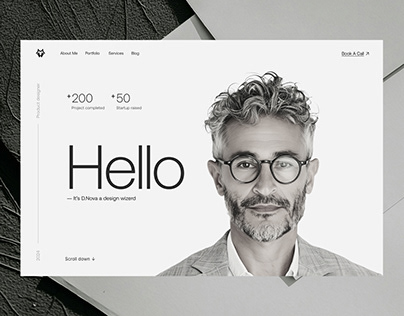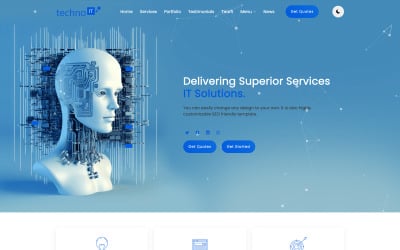Advanced Website Design with Focus on Functionality
Advanced Website Design with Focus on Functionality
Blog Article
Top Tips for Developing an Impactful Website Design That Transforms
To achieve this, one have to take into consideration a range of aspects, consisting of comprehending the target audience, prioritizing individual experience, and optimizing for mobile systems. The tactical use of engaging call-to-actions and a well-defined visual hierarchy plays a vital function in leading users via their journey.
%20%5B60%25%5D.jpg)
Understand Your Target Market
Recognizing your target audience is fundamental to reliable web site style, as it prepares for developing an engaging user experience. Determining who your users are, including their demographics, choices, and habits, allows designers to customize the site's content, format, and functionality to satisfy details demands.
Conducting extensive market research study is vital in this process. Studies, interviews, and analytics can provide useful understandings into individual expectations and discomfort points. By assembling this data, developers can create user identities that represent different sections of the target market, making certain that layout choices are notified and relevant.
In addition, recognizing the target audience helps in selecting proper design aspects such as color design, typography, and images that reverberate with users. An internet site that talks directly to its target market cultivates a feeling of link and trust, encouraging longer gos to and greater conversion rates.
Eventually, a user-centered strategy to internet site design not just boosts customer fulfillment but likewise supports business purposes by driving involvement and commitment. By focusing on the needs and preferences of the target market, a website can successfully offer its function and attain preferred end results.
Prioritize User Experience
To enhance the general performance of a website, focusing on user experience (UX) is important (Website Design). A well-designed UX ensures that visitors can navigate the website easily, discover info rapidly, and involve with material meaningfully. This brings about increased user fulfillment and greater conversion rates
Begin by carrying out user-friendly navigating. Menus needs to be realistically structured, allowing users to find key areas of the website with very little effort. Consistency in design components, such as color design and fonts, promotes knowledge, which is essential for keeping customer interaction.
In addition, consider the packing speed of your website. A hold-up of just a few seconds can cause significant drop-offs, as individuals are much less most likely to wait for a slow-loading web page. Enhancing images and maximizing code can boost efficiency and keep site visitors.
By prioritizing individual experience, you not only create a much more delightful setting for visitors yet also strengthen your brand's integrity. Eventually, an emphasis on UX is a financial investment in the long-term success of your site.
Maximize for Mobile Gadgets
Maximizing for smart phones is critical in today's digital landscape, where an increasing variety of users access internet sites through smart devices and tablet computers. A mobile-friendly design not only enhances user experience but likewise plays a considerable function in improving search engine rankings. To attain this, it is important to embrace a responsive style that instantly adapts to various screen dimensions and orientations.

Packing speed is one more vital factor; mobile users are typically less individual and anticipate quick access to info. By focusing on mobile optimization, you ensure that your web site continues to be competitive and successfully involves a wider audience.
Usage Compelling Call-to-Actions
An internet site's efficiency typically pivots on its capacity to direct visitors towards wanted activities, making engaging call-to-actions (CTAs) essential components of layout. CTAs offer as the essential points that direct users to involve with the site, whether that means purchasing, enrolling in a newsletter, or downloading and install a source.
To produce effective useful source CTAs, clarity is extremely important. Usage concise language that plainly communicates the action you desire the customer to take. Expressions such as "Get going," "Register Free," or "Shop Now" not only convey urgency however likewise remove uncertainty. The placement of CTAs is similarly important; they ought to be strategically positioned throughout the web page to ensure they are conveniently noticeable, especially in high-traffic areas.
Additionally, take into consideration using directional cues, such as arrowheads or pictures, to lead individuals toward these buttons. By concentrating on these components, businesses can considerably boost individual interaction, driving conversions and ultimately accomplishing their web site's goals.
Concentrate On Visual Pecking Order
Effective internet site design depends greatly on a well-structured aesthetic hierarchy that guides users with web content effortlessly. By organizing elements in a manner that prioritizes information, designers can boost individual experience and assist in decision-making. This involves utilizing size, shade, contrast, and spacing tactically to accentuate one of the most important components of a page.
Making use of larger font styles for headings and subheadings establishes a clear difference between different areas, allowing users to check content easily. Additionally, utilizing different shades for buttons and calls-to-action can catch customer attention and encourage communication. Whitespace is another crucial component; it avoids mess and allows individuals to focus on vital messages without disturbances.
Images and graphics must complement the message while also sticking to the well established pecking order, enhancing the total message (Website Design). discover this info here Consistency in layout elements, such as shade plans and typography, additional reinforces the visual hierarchy, making navigation user-friendly

Conclusion
In conclusion, effective web site design requires a comprehensive understanding of the target audience, prioritization of individual experience, and mobile optimization. Eventually, a well-executed website style offers as a vital component in driving individual activities and attaining organization purposes.
Report this page